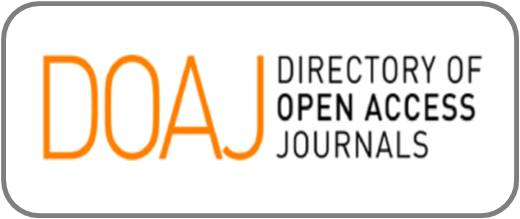Breaking the Cycle: Addressing Sexual Harassment in Higher Education in Bangladesh
DOI:
https://doi.org/10.47540/ijqr.v5i1.2062Keywords:
Female Students, Higher Education, Sexual Harassment, Victim-BlamingAbstract
This research examined the pervasive and deeply entrenched issue of sexual harassment within Bangladeshi universities. This research followed a qualitative research approach and was conducted on the female students of Pabna University of Science and Technology of Bangladesh. Data were collected from 20 female students through In-Depth Interviews, utilising a convenience sampling method. This study reveals that female students face both verbal and non-verbal sexual harassment on campus and outside the campus, which significantly disrupts the academic environment. Although there are legal requirements for the university to implement complaint mechanisms, institutional responses remain inconsistent, often hindered by stigma, fear of retaliation, and distrust in the justice system. Therefore, the Sexual Harassment Prevention Committee has to work effectively to punish the perpetrators and make a safe and secure environment for all.
References
Abe, I. (2012). Defining and awareness of sexual harassment among selected university students in Lagos metropolis, Nigeria. Journal of Emerging Trends in Educational Research and Policy Studies, 3, 212–218.
Ackard, D. M., & Neumark-Sztainer, D. (2002). Date violence and date rape among adolescents: Associations with disordered eating behaviors and psychological health. Child Abuse & Neglect, 26(5), 455–473.
Ahmed, M. (2024). Sexual harassment incidents are repeated, and when they come to light, a fuss begins. Prothom Alo.
Ahmed, N., Nabila, P. H., & Mahmud, S. (2023). Fighting Sexual Harassment in Bangladesh.
Ahmed, T., & Sen, B. (2018). Conservative outlook, gender norms and female wellbeing: Evidence from rural Bangladesh. World Development, 111, 41–58.
Athanasiades, C., Stamovlasis, D., Touloupis, T., & Charalambous, H. (2023). University students’ experiences of sexual harassment: The role of gender and psychological resilience. Frontiers in Psychology, 14, 1202241.
Barkat, A., Osman, A., Ahsan, M., & Kumar, A. P. (2013). Situational Analysis of Sexual Harassment at Tertiary Level Education Institutes in and around Dhaka. UN Women.
Bondestam, F., & Lundqvist, M. (2018). Sexual Harassment in Academia. An International Research Review. Stockholm: The Swedish Research Council.
Bondestam, F., & Lundqvist, M. (2020). Sexual harassment in higher education – a systematic review. European Journal of Higher Education, 10(4), 397–419.
Brown, A. L., Testa, M., & Messman-Moore, T. L. (2009). Psychological Consequences of Sexual Victimization Resulting From Force, Incapacitation, or Verbal Coercion. Violence Against Women, 15(8), 898–919.
Burn, S. M. (2019). The Psychology of Sexual Harassment. Teaching of Psychology, 46(1), 96–103.
Chaity, A. J. (2017). Sexual harassment: Most students unaware of complaint committees. Dhaka Tribune.
Chowdhury, F. D. (2009). Theorising Patriarchy: The Bangladesh Context. Asian Journal of Social Science, 37(4), 599–622.
Cosentino, C., & Banerjee, A. (2017). More women are pursuing engineering degrees, but vast disparities remain. ASEE Voices on Women’s Participation and Retention Workshop Report.
Davidson, M. J., & Fielden, S. (1999). Stress and the Working Woman. In Handbook of Gender & Work Handbook of gender & work (pp. 413–426). SAGE Publications, Inc.
Dziech, B. W., & Weiner, L. (1990). The lecherous professor: Sexual harassment on campus (Second edition, Illini books edition). University of Illinois Press.
Farhin , N. (2018). Supreme Court guidelines on sexual harassment largely ignored. Dhaka Tribune.
Fedina, L., Holmes, J. L., & Backes, B. L. (2018). Campus Sexual Assault: A Systematic Review of Prevalence Research From 2000 to 2015. Trauma, Violence, & Abuse, 19(1), 76–93.
Fnais, N., Soobiah, C., Chen, M. H., Lillie, E., Perrier, L., Tashkhandi, M., Straus, S. E., Mamdani, M., Al-Omran, M., & Tricco, A. C. (2014). Harassment and Discrimination in Medical Training: A Systematic Review and Meta-Analysis. Academic Medicine, 89(5), 817–827.
Gouws, A., & Kritzinger, A. (1995). Sexual Harassment of Students: A Case Study of a South African University. South African Sociological Review, 7(2), 1–24.
Gyawali, K., & Karki, S. (2023). Effects of Sexual Harassment on Learning Activities and Coping Strategies among University Girl Students. ILAM, 19(1), 48–59.
Henning, M. A., Zhou, C., Adams, P., Moir, F., Hobson, J., Hallett, C., & Webster, C. S. (2017). Workplace harassment among staff in higher education: A systematic review. Asia Pacific Education Review, 18(4), 521–539.
Hoel, H., & Vartia, M. (2018). Bullying and sexual harassment at the workplace, in public spaces, and in political life in the EU. European Parliament’s Committee on Women’s Rights and Gender Equality.
Humayra, A. (2024). Sexual harassment in universities and the struggle for justice. The Daily Star.
Humayra, A., & Hossain, A. (2025). Shrouded by shame and eventually forgotten: Sexual harassment policies across universities in Bangladesh. The Daily Star.
Humayra, A., & Nashita, Z. T. (2024). Addressing the crisis of gender-based violence on campus. The Daily Star.
Imonikhe, J., Idogho, P., & Aluede, O. (2011). A Survey of Teachers’ and Students’ Perception of Sexual Harassment in Tertiary Institutions of Edo State, Nigeria. African Research Review, 5(5), 412–423.
Islam, M. N., & Ferdous, J. (2023). Gender-Based Violence in Tertiary Education in Bangladesh. Law and Humanities Quarterly Reviews, 2(4).
Jannite, U. K., Abedin, S., & Rahman, Md. M. (2024). Technology-facilitated sexual harassment and mental health symptoms among young-adult female student sample in Bangladesh. Archives of Women’s Mental Health.
Johnson, P. A., Widnall, S. E., & Benya, F. F. (Eds.). (2018). Sexual Harassment of Women: Climate, Culture, and Consequences in Academic Sciences, Engineering, and Medicine (p. 24994). National Academies Press.
Johnson, S. K., Kirk, J. F., & Keplinger, K. (2016). Why We Fail to Report Sexual Harassment. Harvard Business Review.
Kabat-Farr, D., & Cortina, L. M. (2014). Sex-based harassment in employment: New insights into gender and context. Law and Human Behavior, 38(1), 58–72.
Kahsay, W. G., Negarandeh, R., Dehghan Nayeri, N., & Hasanpour, M. (2020). Sexual harassment against female nurses: A systematic review. BMC Nursing, 19(1), 58.
Kalra, G., & Bhugra, D. (2013). Sexual violence against women: Understanding cross-cultural intersections. Indian Journal of Psychiatry, 55(3), 244.
Kasdagli, S., & Mourtzaki, M. (2020). That’s Not Our Job: Sexual Harassment Against Women at Work. Examining the food-tourism industry [in Greek]. Action Aid and Open Society Foundations. https://notpartofourjob. actionaid.gr
Khan, Md. M. U. A., & Halder, G. D. (2022). Sexual Harassment in Bangladesh: A Note on Legal Perspective. Society & Sustainability, 4(1), 107–113.
Khondaker, S. I. (2019). Walking a tight rope. The Daily Star.
Klein, L. B., & Martin, S. L. (2021). Sexual Harassment of College and University Students: A Systematic Review. Trauma, Violence, & Abuse, 22(4), 777–792.
Krebs, C. P., Lindquist, C., Berzofsky, M., Shook-Sa, B., Peterson, K., Planty, M., Langton, L., & Stroop, J. (2016). Climate Survey Validation Study Final Technical Report. US Dept. of Statistics, Bureau of Justice Statistics. Washington DC.
Langhout, R. D., Bergman, M. E., Cortina, L. M., Fitzgerald, L. F., Drasgow, F., & Williams, J. H. (2005). Sexual Harassment Severity: Assessing Situational and Personal Determinants and Outcomes1. Journal of Applied Social Psychology, 35(5), 975–1007.
Latcheva, R. (2017). Sexual Harassment in the European Union: A Pervasive but Still Hidden Form of Gender-Based Violence. Journal of Interpersonal Violence, 32(12), 1821–1852.
Lenhart, S. A. (2016). Clinical aspects of sexual harassment and gender discrimination: Psychological consequences and treatment interventions (First issued in paperback). Routledge.
McDonald, P. (2012). Workplace Sexual Harassment 30 Years on: A Review of the Literature. International Journal of Management Reviews, 14(1), 1–17.
Morley, L. (2011). Sex, grades and power in higher education in Ghana and Tanzania. Cambridge Journal of Education, 41(1), 101–115.
Molstad, T. D., Weinhardt, J. M., & Jones, R. (2021). Sexual assault as a contributor to academic outcomes in University: A systematic review. Trauma, Violence, & Abuse, 24(1), 218–230.
Mukherjee, A., & Dasgupta, S. (2022). “He Says, She Says”: Sexism and Sexual Harassment in Higher Educational Institutions of India. Journal of Economic Issues, 56(2), 408–415.
Najdowski, C. J., & Ullman, S. E. (2009). PTSD Symptoms and Self-Rated Recovery Among Adult Sexual Assault Survivors: The Effects of Traumatic Life Events and Psychosocial Variables. Psychology of Women Quarterly, 33(1), 43–53.
Nigar, N., Uzzaman, M. A., & Sagar, Md. M. H. (2025). Fear of sexual assault and personal safety in young female students of Bangladesh. Journal of Sexual Aggression, 1–12.
Nova, F. F., Rifat, Md. R., Saha, P., Ahmed, S. I., & Guha, S. (2019). Online sexual harassment over anonymous social media in Bangladesh. Proceedings of the Tenth International Conference on Information and Communication Technologies and Development, 1–12.
Odhikar. (2019). Statistics on Violence against Women 2001-2019. Odhikar.
Parvej, M. I., Tabassum, M., & Hossain, M. R. (2020). Sexual Harassment Experience Among the Female Population in Bangladesh. Science, Technology & Public Policy, 4(1), 22.
Plan International. (2021). Plan International at the United Nations: 2021 Annual Report.
Rezvi, M. R., Prithvi, P., & Hossain, Md. M. (2021). Sexual Harassment of University Students in Bangladesh: A Case on Dhaka University. SSRN Electronic Journal.
Rosenthal, M. N., Smidt, A. M., & Freyd, J. J. (2016). Still Second Class: Sexual Harassment of Graduate Students. Psychology of Women Quarterly, 40(3), 364–377.
Roy, T., Rayhan, M. B., & Aktar, R. (2023). Prevalence of Sexual Harassment among Female Students of Khulna University. Indonesian Journal of Innovation and Applied Sciences (IJIAS), 3(1), 12–21.
Schneider, K. T., Swan, S., & Fitzgerald, L. F. (1997). Job-related and psychological effects of sexual harassment in the workplace: Empirical evidence from two organizations. Journal of Applied Psychology, 82(3), 401–415.
Shad, F., Khan, A. A., Ullah, M. Z., & Nadir, F. (2023). Exploring Sexual Harassment and Students’ Academic Performance: A Case Study of Business Schools of Peshawar City. Journal of Social Sciences Review, 3(2), 417–426.
Shahriar, Md. H., & Ferdous, J. (2023). Sexual Harassment in Higher Educational Institutions in Bangladesh: Contemporary Trends and Challenges. Journal of Social and Political Sciences, 6(4).
Sharma, T., Aryal, B., Poudel, B., & Pandey, H. K. (2023). Sexual Harassment in Female Students at Tribhuvan University: A Narrative Inquiry Research. Quest Journal of Management and Social Sciences, 5(2), 234–243.
Telfils, R., Ladner, J., & Tavolacci, M. P. (2024). Sexual harassment among higher education students: A worldwide review. European Journal of Public Health, 34(Supplement_3), ckae144.1446.
The Daily Star. (2023). Address sexual abuse at educational institutions. The Daily Star.
Till, F. J. (1980). Sexual Harassment: A Report on the Sexual Harassment of Students. (Report of the National Advisory Council of Women’s Educational Programs.). Washington, DC: US Department of Education.
Ullman, S. E., & Brecklin, L. R. (2003). Sexual Assault History and Health-Related Outcomes in a National Sample of Women. Psychology of Women Quarterly, 27(1), 46–57.
United News of Bangladesh. (2024). How to Ensure Women’s Safety in Educational Institutions. United News of Bangladesh.
UN Women. (2019). Handbook: Addressing violence and harassment against women in the world of work. UN Women.
UN Women. (2019). Progress of the World’s Women 2019–2020.
Voth Schrag, R. J. (2017). Campus Based Sexual Assault and Dating Violence: A Review of Study Contexts and Participants. Affilia, 32(1), 67–80.
WHO. (2013). Global and Regional Estimates of Violence Against Women (Prevalence and Health Effects of Intimate Partner Violence and Non-Partner Sexual Violence). Geneva: World Health Organization.
Published
How to Cite
Issue
Section
Copyright (c) 2025 Nishat Tabassum, Farhana Jakia Tamanna

This work is licensed under a Creative Commons Attribution-ShareAlike 4.0 International License.

















